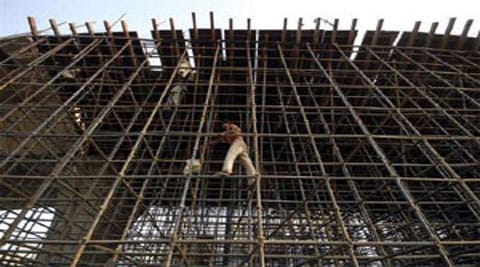How to be smart- An article by Sama Khan
July 31, 2014
How to be smart

SUMMARY
It is important to look at what went wrong with the Jawaharlal Nehru National Urban Renewal Mission.
Israelis and Palestinians must stop circling the grindstone of violence, remember the future
At A time when the contours of the new scheme for 100 smart cities are being decided, it is important to look at what went wrong with the Jawaharlal Nehru National Urban Renewal Mission (JNNURM), launched in 2005 to improve infrastructure and governance in cities. With an overall investment of more than Rs 1 lakh crore, it covered both small towns and big cities. Amid all the criticism of the scheme, it is imperative to look at what went right and what didn’t.
One of the major drawbacks of the JNNURM was that it focused too much on big cities, directing fewer funds towards small and medium ones. In principle, it was meant to include all cities/ towns as per the 2001 Census. One of the things it did right was provide funds for class V and VI towns, which have populations of less than 10,000 people. Though their share in resources was dismal, it started a process that could have been taken forward in the future.
Another criticism was that access to JNNURM funds was linked to the achievement of mandatory reforms. Many feel this kind of incentivising did not work because a number of states and cities refused to comply. The Centre had no choice but to release funds after being given assurances on paper. However, many states did comply. As of January 2014, states like Himachal Pradesh, Kerala and Tamil Nadu had completed 19 out of the 23 reforms. Others like J&K, Chhattisgarh and West Bengal had completed 16. Bigger cities like Delhi did not perform as well and managed to complete only 15 reforms but still received the highest funding under the JNNURM.
The constant dependence of urban local bodies (ULBs) on state or parastatal agencies was another criticism. The JNNURM was supposed to encourage the role of ULBs in project preparation and implementation. However, in practice, the role of the ULB was reduced to that of quiet spectator in some cases and appointing agency in others. The funding pattern did encourage cost-sharing between the Centre, state and ULBs. However, in some cases, smaller towns were unable to contribute their share of the project cost.
Underutilisation of funds was another issue. Since the smaller ULBs are not financially independent, implementing reforms can be difficult, which leads to delays in the release of funds. Also, since a number of smaller ULBs lack capacity, the funds, even when released, were not enough to realise their potential or utilised optimally. This leads to a vicious cycle of poor performance stemming from poor capacity and lack of funds.
While the JNNURM is likely to be discontinued, the new concept of “smart cities” doesn’t hit the nail on the head either. As enunciated in the Union budget speech, the development of satellite towns and modernisation of existing mid-sized cities seems to be the plan. But this lacks consideration for small towns — class III to VI — that have populations lower than 49,999 and which account for 29 per cent of the total urban population. Many of these towns may not be near big cities but may actually possess enormous growth potential. Consider this, between 2001 and 2011, the population living in class I (1,00,000 and above) and class II (50,000-99,999) towns has increased by 27 and 20 per cent respectively. Whereas the population in class III (20,000-49,999) and class IV (10,000-19,999) towns has increased by 40 and 41 per cent respectively. Further, the population in class V (5,000-9,999) and class VI towns (less than 5,000) has doubled. This increase in small-town populations needs to be backed with investment to sustain urbanisation as it will contribute majorly to economic clusters.
The investment allocation for the 100 smart cities project, Rs 7,060 crore, is 6 per cent of the total estimated investment of the JNNURM. As of March 2012, the JNNURM covered 1,274 small towns and 65 big cities. In terms of both investment and coverage, the JNNURM was a much larger scheme. It had a definitive structure that got lost in implementation. What is needed is capacity building at the local level. Until ULBs are empowered to carry out their functions properly, no new scheme can achieve its objectives. When a large number of our cities struggle with even the delivery of basic services, creating technologically advanced cities may not be attacking the root of the problem. What is required is the equitable distribution of funds and resources to small and medium cities instead of identifying a few smart cities.
The writer is a research associate at the Centre for Policy Research, Delhi
Source-http://indianexpress.com/







